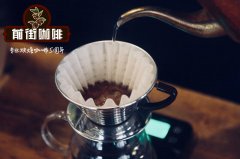Introduction of Pacamara species of El Salvador Coffee in San Leticia Manor

Professional coffee knowledge exchange more coffee bean information please follow the coffee workshop (Wechat official account cafe_style)
Pacamara varieties of Saint Leticia Manor
Flavor description:
"extremely bright sweet and sour fruit, with drupes, vanilla, chocolate and spices."
Sweet and bright, thick taste, smooth cream, changeable layers, great amplitude of flavor.
Production information:
Country: El Salvador / El Salvador
Producing areas:
Producer: Finca Santa Leticia / Saint Leticia Manor
Altitude: 1250-1750 m
Variety: Pacamara / Pacamara
Treatment method: washing method
Baking degree: medium and shallow baking
Features:
The "half-Blood Prince" from the century-old manor in El Salvador, dormant for half a century, has finally shone brilliantly on the stage of today's International Cup competition.
Bean Story:
Chateau Saint-Leticia
The birth of the half-Blood Prince
In 1958, Pacamara was born in the National Coffee Research Center of El Salvador. His parents are Arabica, his mother is Pacas (bourbon variety) endemic to El Salvador, and his father is Maragogype, a variety of Tibica known as elephant beans, so he is named.
When it first appeared in the CoE Cup test competition in 2004, it was polarized because of its special flavor, and even caused controversy over how to compare this new variety that had never been seen before. In recent years, Pacamara has repeatedly won the Central American Cup Test Competition, and the beans are beautiful and huge, so they have the good name of "half-Blood Prince," which echoes the new "geisha" in Panama in recent years.
The disadvantage of Pacamara is that the tree is tall and difficult to harvest by hand, coupled with low yield and huge bean body. after harvest, it is difficult to use water washing, semi-washing or honey treatment, and even need to prepare different treatment equipment for this. Therefore, although the flavor is extremely charming, it has not been paid attention to in the past when it attached importance to economic benefits.
Finca Santa Leticia was founded in 1870. Its founder, Francisco Menendez, was an important figure in the history of El Salvador. He not only made great contributions to the education system of Giza, but also became president in 1886. When he was in power, he drafted a constitution to lead the country to freedom and democracy. After his death on June 22nd, 1890, the people of the country commemorated this day each year as Teachers' Day. The estate is now run by the descendants of his family.
Located in the Apaneca volcanic area of western El Salvador and on the Central American ecological corridor stretching from Mexico to Panama, the San Leticia Manor covers an area of nearly 100 hectares. Shade planting (shade-grown) is very important to the conservation of local biodiversity. According to statistics, the manor inhabits more than 120 species of migratory birds and 259 species of insects, which can produce 2500 kilograms of fresh oxygen for the earth every day.
Important Notice :
前街咖啡 FrontStreet Coffee has moved to new addredd:
FrontStreet Coffee Address: 315,Donghua East Road,GuangZhou
Tel:020 38364473
- Prev

Cold-extracted coffee beans are recommended to make cold-extracted coffee at home. Analysis of the steps of the course.
Professional coffee knowledge exchange more coffee bean information Please pay attention to the coffee workshop (Wechat official account cafe_style) the drinking method of cold coffee generally speaking, cold coffee is the best pure drink, in order to drink mellow and coffee beans unique flavor. However, adding other ingredients to give a different taste, is also another kind of
- Next

Introduction to the treatment of Costa Rican Coffee with Blumas Manor Honey
Professional coffee knowledge exchange more coffee bean information please follow the coffee workshop (Wechat official account cafe_style) flavor description: "Champion Manor honey treatment of the best representative of beans, worthy of careful taste" taste rich and varied, with bright taste of malic acid, vanilla and chocolate, sweet finish with honey. Production information: country: Costa Rica:
Related
- Detailed explanation of Jadeite planting Land in Panamanian Jadeite Manor introduction to the grading system of Jadeite competitive bidding, Red bid, Green bid and Rose Summer
- Story of Coffee planting in Brenka region of Costa Rica Stonehenge Manor anaerobic heavy honey treatment of flavor mouth
- What's on the barrel of Blue Mountain Coffee beans?
- Can American coffee also pull flowers? How to use hot American style to pull out a good-looking pattern?
- Can you make a cold extract with coffee beans? What is the right proportion for cold-extracted coffee formula?
- Indonesian PWN Gold Mandrine Coffee Origin Features Flavor How to Chong? Mandolin coffee is American.
- A brief introduction to the flavor characteristics of Brazilian yellow bourbon coffee beans
- What is the effect of different water quality on the flavor of cold-extracted coffee? What kind of water is best for brewing coffee?
- Why do you think of Rose Summer whenever you mention Panamanian coffee?
- Introduction to the characteristics of authentic blue mountain coffee bean producing areas? What is the CIB Coffee Authority in Jamaica?

